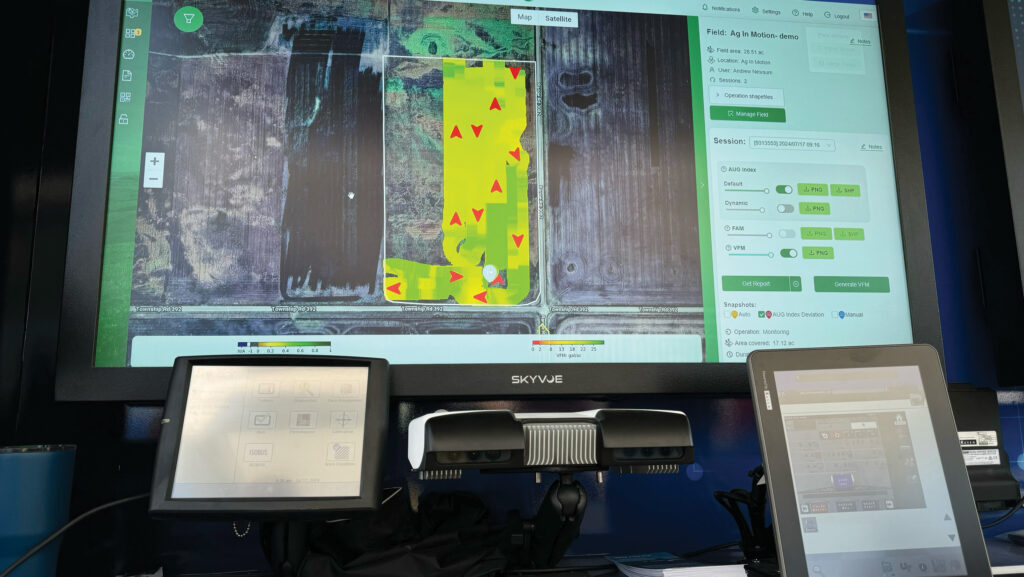New Holland cameras alter spray application rate on the go
 © MAG/Oliver Mark
© MAG/Oliver Mark New Holland has launched a crop-monitoring camera kit.
Thanks to some clever software, it can determine the supposed optimal application rate of fungicides, plant growth regulators, nitrogen and non-selective herbicides.
The roof-mounted cameras assess crop thickness and health as the sprayer passes through the field.
It allows for immediate, automatic rate alterations based on the perceived condition of the plants.
See also: How to retrofit old sprayers with automatic section control
Field Analyzer was the crown jewel of Greek machine vision specialist Augmenta, which New Holland acquired for $110m (£86m) last year.
The first commercial versions of this “see and act” technology are now making their way onto North American farms.
Most of the hardware is housed in a box on the cab roof, including a cocktail of RGB, infrared and near-infrared cameras and sensors that offer a 42m field of vision.
This multi-spectral combination increases the chances of the system detecting crop stress.
It will also detect outright biomass through normalised differenced vegetation index readings, as the sprayer cruises along.
Live maps
In a split second, the visual data is translated into prescription maps.
The rate is altered within a minimum and maximum range – as defined by the operator during setup – across the full width of the boom.
Any extreme variations in crop condition will be captured as high-resolution still images for later perusal.
However, the system only works effectively in daylight; if it’s too dark then it will revert to the ceiling rate.
According to New Holland, one of the biggest returns on investment will come from varying fungicide applications, simply due to the sheer volume of product involved.
But there are also potential savings in the use of glyphosate on post-harvest stubbles by only applying herbicide where weeds are detected.
This is also the case with nitrogen applications by reducing rates in thick crops showing no signs of nutrition deficiency.
The system is integrated with Raven software – purchased by New Holland in 2021 – and will work on an isobus-compatible CNH monitor.
The hardware is likely to cost about C$30,000 (£17,000), plus a subscription of roughly C$4,000/year (£2,250).

